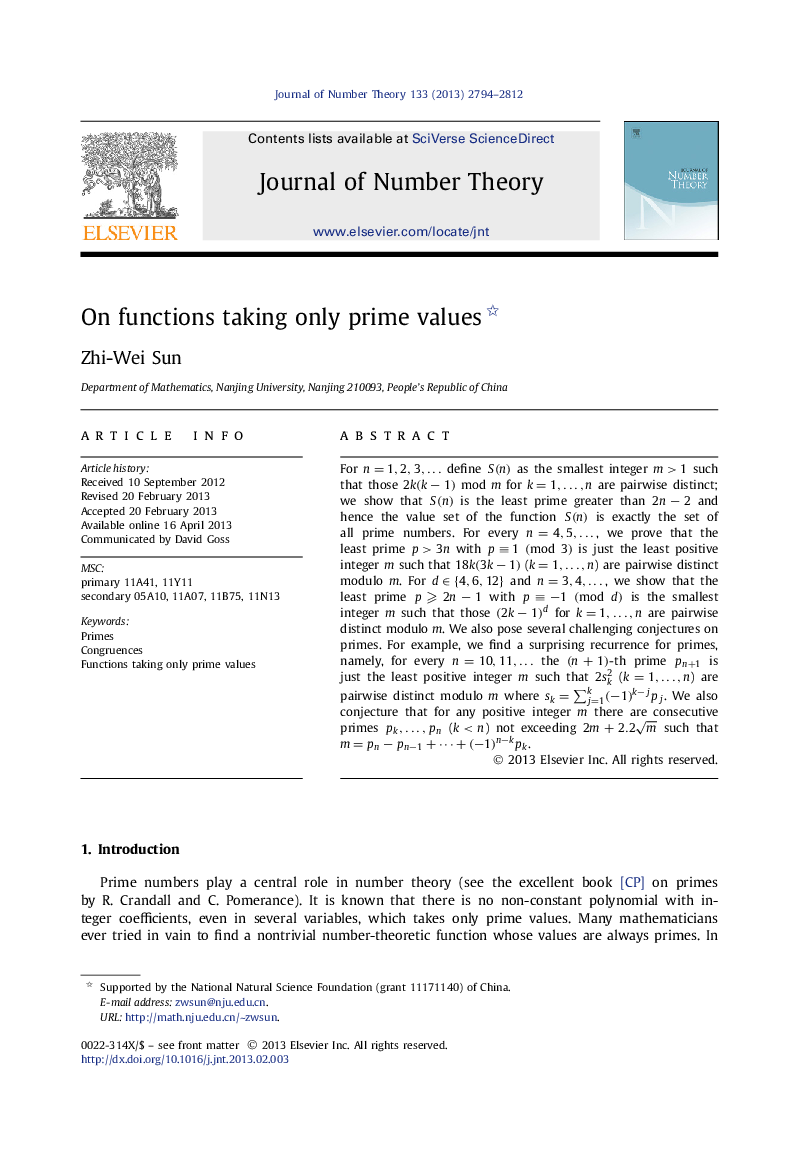| Article ID | Journal | Published Year | Pages | File Type |
|---|---|---|---|---|
| 4593985 | Journal of Number Theory | 2013 | 19 Pages |
For n=1,2,3,…n=1,2,3,… define S(n)S(n) as the smallest integer m>1m>1 such that those 2k(k−1)2k(k−1) mod m for k=1,…,nk=1,…,n are pairwise distinct; we show that S(n)S(n) is the least prime greater than 2n−22n−2 and hence the value set of the function S(n)S(n) is exactly the set of all prime numbers. For every n=4,5,…n=4,5,… , we prove that the least prime p>3np>3n with p≡1(mod3) is just the least positive integer m such that 18k(3k−1)18k(3k−1) (k=1,…,nk=1,…,n) are pairwise distinct modulo m . For d∈{4,6,12}d∈{4,6,12} and n=3,4,…n=3,4,… , we show that the least prime p≥2n−1p≥2n−1 with p≡−1(modd) is the smallest integer m such that those (2k−1)d(2k−1)d for k=1,…,nk=1,…,n are pairwise distinct modulo m . We also pose several challenging conjectures on primes. For example, we find a surprising recurrence for primes, namely, for every n=10,11,…n=10,11,… the (n+1)(n+1)-th prime pn+1pn+1 is just the least positive integer m such that 2sk2 (k=1,…,nk=1,…,n) are pairwise distinct modulo m where sk=∑j=1k(−1)k−jpj. We also conjecture that for any positive integer m there are consecutive primes pk,…,pnpk,…,pn (k
